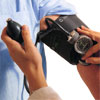Pump up your heart in five easy steps
Did you know that a good night’s sleep can help prevent heart disease? There are many simple ways to lower your risk.
During February, American Heart Month, Dr Holly Andersen, director of education and outreach at the Ronald O. Perelman Heart Institute of NewYork-Presbyterian Hospital/Weill Cornell Medical Center, offers some easy steps to improve heart health and overall wellbeing throughout the year.
An estimated 58 million Americans are affected by heart disease, including nearly half a million women who die every year of heart disease and stroke. Yet, women continue to lag behind in their understanding of this disease.
“While we are making great strides in advancing the treatment of heart disease, we need to do more to encourage prevention and educate women about their risk factors,” says Dr Andersen. “Educating women about this disease not only helps them to improve their own health, but women are more likely to spread the message of prevention to friends and family. When you educate a woman you educate a society.”
Step 1: Know your numbers
Your blood pressure, cholesterol and triglyceride levels are the most important numbers you will need to know before you begin on the path to good heart health. A normal blood pressure level is 140/85 or less, total cholesterol levels should be less than 200, and triglycerides less than 150.
Step 2: Start walking
Exercise is the fountain of youth. A simple 20- to 30-minute walk a few days a week can actually reduce the risk of premature death by more than 50 per cent. Physical activity also improves sleep, reduces stress, elevates mood, reduces blood pressure, improves cholesterol, improves cognition and prevents memory loss.
Step 3: Laugh out loud
Laughter really is the best medicine. Just 15 minutes of laughter is about equivalent to 30 minutes of aerobic exercise with respect to our cardiovascular health. Laughter has also been linked to the healthy function of blood vessels, an increase of the brain hormones that improve mood, and reduction of pain and anxiety.
Step 4: Focus on your waistline, not your weight
Your waistline is a better measurement of your overall health than your weight because the amount of fat around your waistline is directly linked to high blood pressure and high cholesterol and can place you at increased risk for diabetes. Anything you can do to make your waistline smaller is definitely a step in the right direction. Liposuction doesn’t count!
Step 5: Get a good night’s sleep
Sleep is one of the most undervalued elements of our daily routines, but it is absolutely vital to good health. Lack of sleep increases your blood pressure, induces stress, increases your appetite and slows down your metabolism, dampens your mood and decreases your cognition.
(Source: Weill Cornell Medical Center)
More information
 | For more information on keeping your heart healthy, including information on how the heart works, the effect of cholesterol and eating for heart health, as well as some useful videos and tools, see Heart Health. |
 | For more information on fitness and exercise, including stretches, types of exercise, exercise recovery and exercise with health conditions, as well as some useful videos, see Fitness and Exercise. |
 | For more information on high blood pressure, including investigations and treatments, as well as some useful animations, videos and tools, see Hypertension (High Blood Pressure). |
 | For more information on obesity, health and social issues, and methods of weight loss, as well as some useful tools, see Obesity and Weight Loss. |
Dates
Created by:

 Login
Login














